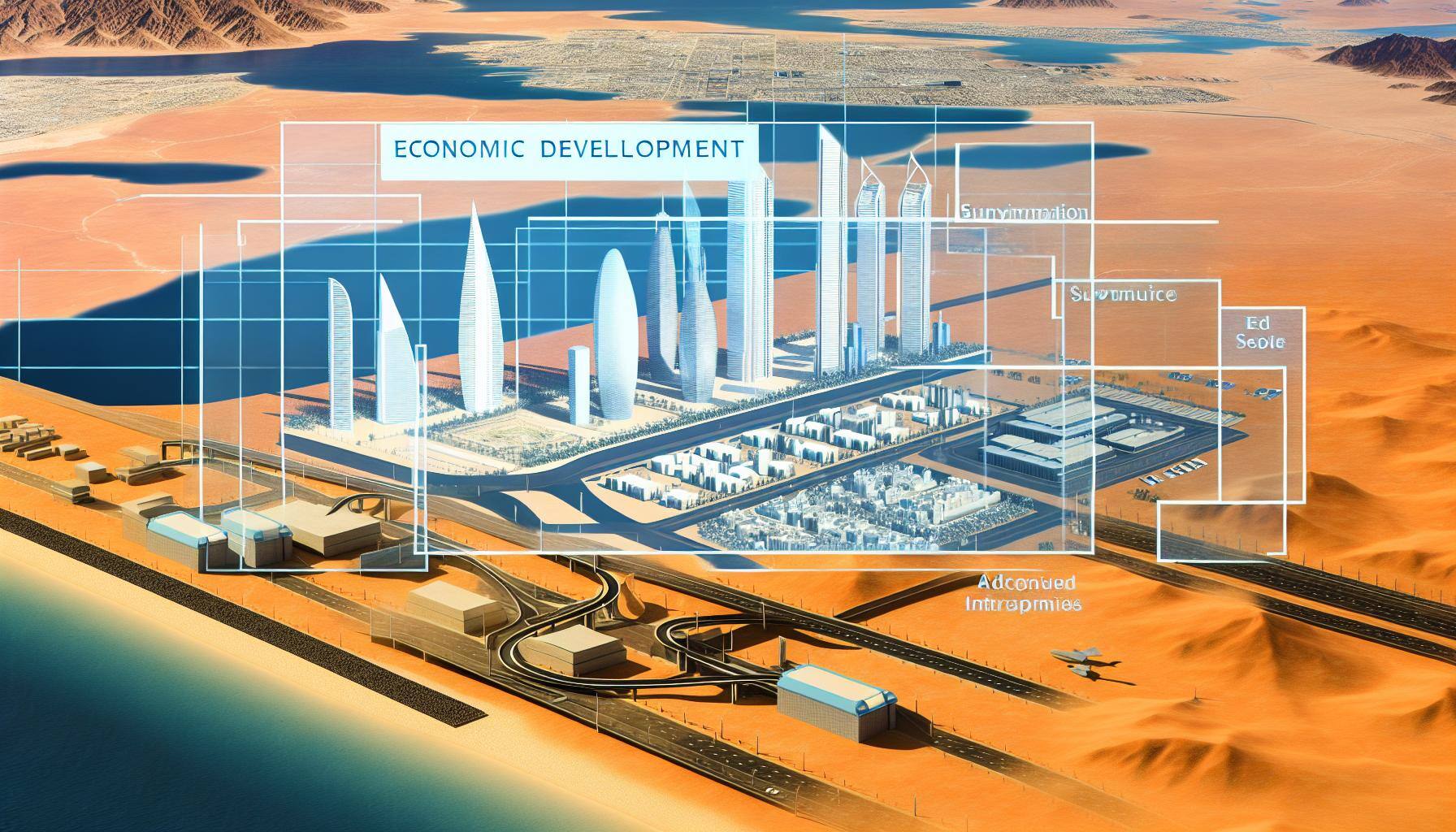3 min read
Saudi Arabia Has a Red Sea Vision, Not Yet a Strategy
By: The Arab Gulf States Institute in Washington on June 11, 2024 at 8:00 AM

Since the mid-2010s, Saudi Arabia has centered its foreign policy on the Red Sea, driven by domestic, regional, and international dynamics.
Central to this focus is Vision 2030, Riyadh's ambitious economic development plan. Key projects, including the futuristic city of Neom, expanded ports, and modernized infrastructure, highlight Saudi Arabia’s economic aspirations for the Red Sea region, which serves as a critical juncture connecting the Arabian Peninsula with Africa. Despite these economic goals, Saudi Arabia has struggled to formulate a comprehensive cross-regional strategy to address the escalating insecurity from the Red Sea to the Bab el-Mandeb strait and the Gulf of Aden.
Economy-First Approach
Saudi Arabia’s Vision 2030 emphasizes economic investment along its western coast. Significant projects include Neom, the modernization of Jeddah port, the King Fahd Industrial Port at Yanbu, and Saudi Aramco's expansion of Petroline. Internationally, Riyadh has invested heavily in Egypt and the Horn of Africa, becoming a top investor in Ethiopia, Sudan, Somalia, and Djibouti. The normalization process with Israel, though currently stalled due to the Gaza conflict, also holds economic potential.
Security Challenges
For Saudi Arabia, economic development necessitates a stable Red Sea. However, the region is plagued by security threats, many stemming from Yemen's conflict and exacerbated by the Gaza war. The Houthi rebels, often targeting Saudi territory and maritime activities, have intensified their attacks on commercial shipping in solidarity with Gaza. These actions disrupt vital trade routes, significantly affecting Egypt's Suez Canal revenue and escalating piracy off the Horn of Africa due to diverted international naval focus.
The ongoing conflict in Sudan, especially around Port Sudan, further complicates regional stability. Additionally, smuggling, particularly of weapons and drugs like Captagon, poses significant challenges. The United Nations reported extensive arms smuggling networks between Yemen, Somalia, and Sudan, primarily fueled by Iranian support.
Need for a Comprehensive Strategy
While a potential ceasefire between Israel and Hamas might reduce Houthi attacks temporarily, it is unlikely to resolve the underlying Red Sea security issues. Saudi Arabia’s current economy-focused policy is insufficient for addressing these multifaceted security threats. However, Riyadh possesses the tools to shape a comprehensive strategy.
Enhancing Security Capabilities
Saudi Arabia has improved its defense and maritime security capabilities, particularly the navy's Western Fleet and the Border Guard’s maritime forces. Modernization efforts have focused on countering Houthi threats and defending vital infrastructure. The Saudi navy’s enhanced capabilities are evidenced by its participation in U.S.-led multinational exercises and the complex evacuation from Sudan in 2023. Additionally, Saudi Arabia's command of Task Force 152 of the Combined Maritime Forces and Task Force Sentinel underscores its growing naval proficiency.
Leveraging the Red Sea Council
Saudi Arabia established the Council of the Arab and African countries of the Red Sea and the Gulf of Aden in 2020, aiming to enhance cooperation on maritime security. The council includes Egypt, Jordan, Eritrea, Yemen, Sudan, Djibouti, and Somalia. Despite its potential, the council has yet to become an effective multilateral framework due to regional conflicts, political tensions, and the exclusion of influential countries like the UAE and Ethiopia.
Strategic Leadership and Inclusion
To bolster the council’s effectiveness, Saudi Arabia could lead initiatives promoting maritime security, support local coast guard training, and engage in political coordination. Including the UAE and Ethiopia in the council’s framework would strengthen collective security efforts. By spearheading these initiatives, Riyadh could assert its regional leadership, fostering greater stability and supporting its broader economic and developmental goals.
Conclusion
Saudi Arabia’s focus on the Red Sea through Vision 2030 underscores its economic ambitions. However, the region's security complexities necessitate a comprehensive strategy that integrates economic and security concerns. Through enhanced defense capabilities and strategic use of the Red Sea Council, Saudi Arabia can address these challenges, promoting regional stability and supporting its long-term economic vision.
Related Posts
Threats and Challenges to Trade in the Red Sea:..
A highly strategic arena for regional and international actors alike, the Red Sea serves as a..
Maritime Intelligence Brief: Expanding Risks in..
The global maritime security environment continues to shift rapidly, with recent incidents..
Israel in the Red Sea: From Threats to Cooperation
The Red Sea region has emerged as a focal point of geopolitical concern due to escalating Houthi..




